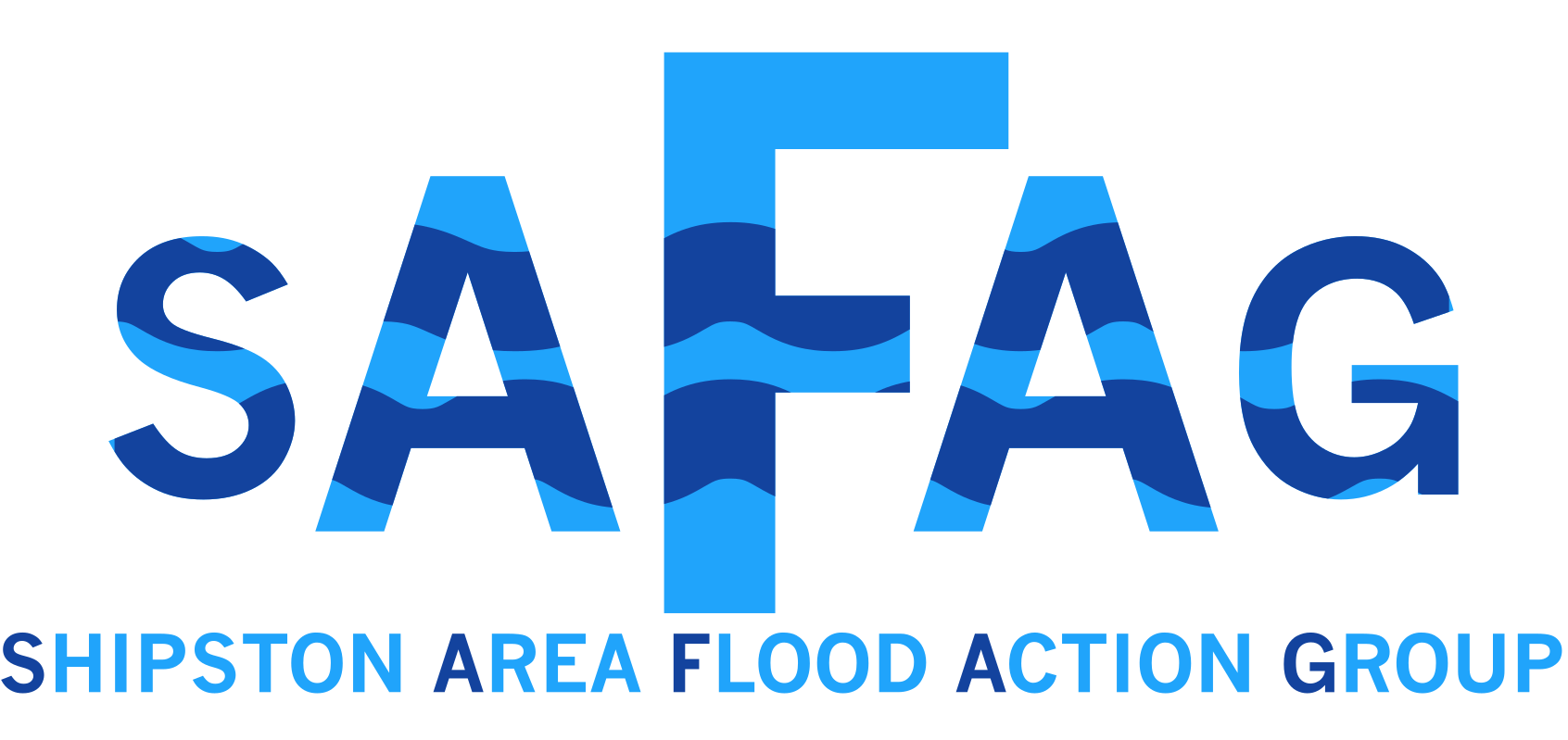
WHY WE NEED TO SLOW THE FLOW
The River Stour catchment area is c.187 sq km and has 36 tributaries rising from the surrounding agricultural land. The town of Shipston-on-Stour is the bottleneck of this massive convergence. The river systems combined with the town’s Victorian drainage simply cannot cope.
Shipston has been identified in Warwickshire County Council’s Local Flood Risk Management Strategy as now having the highest risk of flooding from surface water in the county. The Shipston bottleneck leads to a rapid rise in river height, typically 3-4 times each year and the town and surrounding villages will flood once the river level exceeds 4.2m at the Shipston gauge. The highest ever recorded level is 5.22m on 20th July 2007. Tredington and other downstream communities will flood when the gauge exceeds 3.4m.
The justification for the 3.5m limit decision is simple. If the river does not exceed 3.5m height at the Shipston gauge no properties will be flooded from that source within Shipston or the downstream villages.
Disastrous floods in 1998 and 2007 resulted in almost 130 homes and businesses in the Shipston area being under water, followed by lesser occurrences in 2012, 2013 and 2016. Hundreds of people were affected and were without homes for many months – the knock-on effects of such an event are immeasurable.
Not slowing the flow can have potentially severe impacts:
– Danger to life from fast flowing water through town.
– Dramatic cost penalties for commercial businesses which get flooded.
– Outlying villages (at least 9) have a reliance on Shipston as a main rural centre for schools, medical, police, fire and other services. Flooding leaves them isolated particularly if the bridge is closed.
LATEST READING OF THE STOUR AT SHIPSTON
Source: http://environment.data.gov.uk/flood-monitoring/id/stations/2092
Catchment: Shipston , Warwickshire Avon
River Gauge ID: 2045
Name: Shipston
Date / Time: 2025-05-30T19:00:00Z,
CURRENT RIVER LEVEL: 0.331
LATEST READING OF THE STOUR AT PRESTON
Source: http://environment.data.gov.uk/flood-monitoring/id/stations/2010
Catchment: ,
GOALS
Our goal is to slow the flow using Natural Flood Management measures so that we can restrict the maximum flooding height of the Stour through Shipston to 3.3m for about seven hours.

IN SHORT ...
This is the Upper River Stour passing through Traitor’s Ford at a normal flow rate.

When the Upper River Stour floods at Traitor’s Ford like this …

… a few hours later this is what happens at Shipston Bridge.

HOW DO WE SLOW THE FLOW?
SAFAG, in collaboration with its agency partners, has concluded that conventional hard engineering measures, similar to the barriers at Upton on Severn, or intensive dredging are neither physically nor financially feasible.
Sediment clearance around Shipston Bridge to improve water conveyance and capacity is an ongoing need, but our principal option is to hold water back in the upper catchment by means of Natural Flood Management (NFM) measures.
These would potentially be located within the Knee Brook, Nethercote Brook, Sutton Brook, and Upper Stour sub-catchments; thus SLOWING THE FLOW from the many tributaries before water even reaches the main river and the areas at risk of flooding downstream, resulting in a lower peak thus reducing flood risk.
SAFAG has visited several locations which have already adopted these measures with some success (eg. Pontbren, Belford, Pickering and Stroud) and in partnership with landowners and farmers, is tailoring such schemes to the needs of the Stour catchment.
HOW HAVE WE SLOWED THE FLOW?
Our initial three phase plan has now been implemented:
PHASE 1 – in conjunction with Coventry University, we analysed the catchment and identified specific potential NFM measures for all the most significant watercourses.
PHASE 2 – we met with stakeholders to discuss our work and jointly review our proposals face to face. Then, with their knowledge and agreement, we developed the proposals, obtained costings and gained all necessary consents.
PHASE 3 – we secured funding and used that to implement agreed NFM interventions in a planned programme of works across the entire catchment area.

WHAT'S NEXT?
Slow the Flow is part of an integrated plan for the catchment. Other equally important elements are working with the many housing developers within Shipston and the surrounding villages to ensure that their building developments do not exacerbate the runoff issue. Current planning regulations only require these sites to remain flood neutral, whereas it is within the developers’ power to improve matters, by enhancing drainage and storage facilities on their sites, for example using permeable materials so that more rainwater is absorbed into the ground. This is termed flood betterment.
SAFAG have secured agreements with 3 house builders to ensure their developments on the Campden Road in Shipston achieve ‘betterment’ of 25/40% in site surface water run off by enhanced water storage. This has already reduced water flows down the roads into Shipston Town Centre. Similar agreements have been secured with house builders in Tredington and Brailes.
We have a number of projects and proposals currently under consideration, implementation, monitoring & maintenance.
What we really need is YOUR HELP! There are three ways you can:
If you see a flood or are concerned about the risk of flood, or would like to discuss our work please use our CONTACT US page.
If you like the idea of getting in your wellies and doing something to help protect thousands of people from flooding please contact us on the VOLUNTEER page.
Finally, for those who are busy or unable to support in person, you can consider DONATING to our cause.
